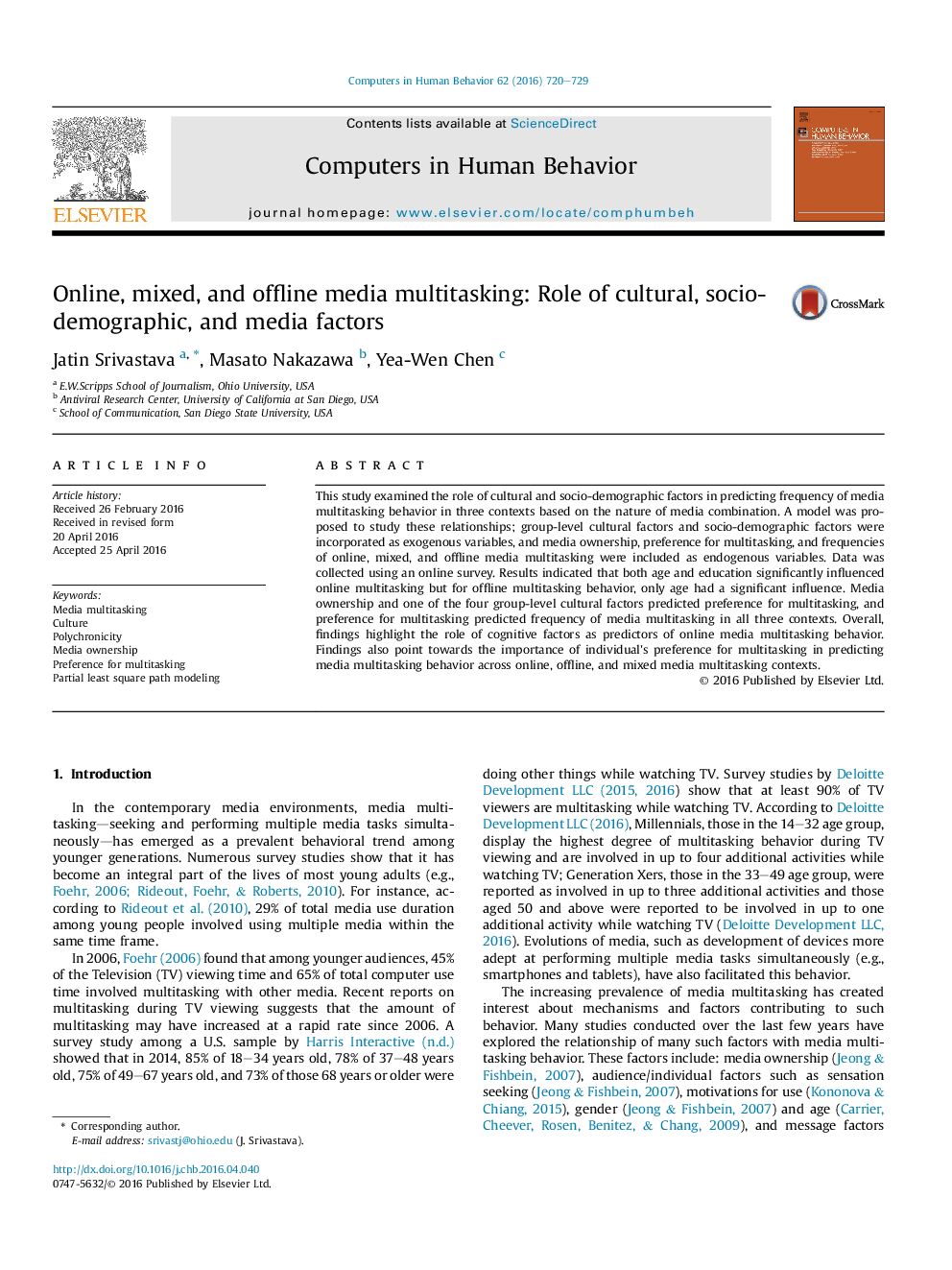| Article ID | Journal | Published Year | Pages | File Type |
|---|---|---|---|---|
| 6836967 | Computers in Human Behavior | 2016 | 10 Pages |
Abstract
This study examined the role of cultural and socio-demographic factors in predicting frequency of media multitasking behavior in three contexts based on the nature of media combination. A model was proposed to study these relationships; group-level cultural factors and socio-demographic factors were incorporated as exogenous variables, and media ownership, preference for multitasking, and frequencies of online, mixed, and offline media multitasking were included as endogenous variables. Data was collected using an online survey. Results indicated that both age and education significantly influenced online multitasking but for offline multitasking behavior, only age had a significant influence. Media ownership and one of the four group-level cultural factors predicted preference for multitasking, and preference for multitasking predicted frequency of media multitasking in all three contexts. Overall, findings highlight the role of cognitive factors as predictors of online media multitasking behavior. Findings also point towards the importance of individual's preference for multitasking in predicting media multitasking behavior across online, offline, and mixed media multitasking contexts.
Related Topics
Physical Sciences and Engineering
Computer Science
Computer Science Applications
Authors
Jatin Srivastava, Masato Nakazawa, Yea-Wen Chen,
